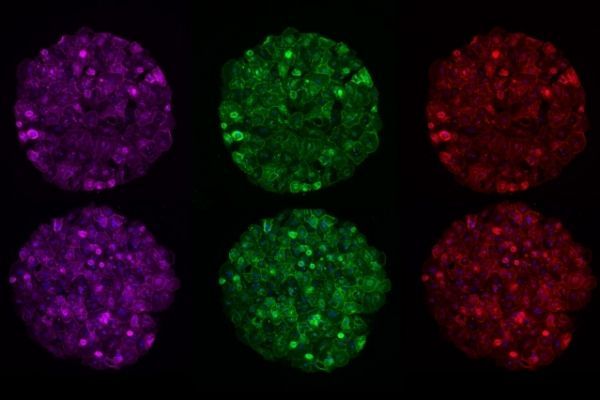Novel therapies based on a process known as RNA interference (RNAi) hold great promise for treating a variety of diseases by blocking specific genes in a patient’s cells. Many of the earliest RNAi treatments have focused on diseases of the liver, because RNA-carrying particles tend to accumulate in that organ.
MIT researchers have now shown that an engineered model of human liver tissue can be used to investigate the effects of RNAi, helping to speed up the development of such treatments. In a paper appearing in the journal Cell Metabolism on March 5, the researchers showed with the model that they could use RNAi to turn off a gene that causes a rare hereditary disorder. And using RNA molecules that target a different gene expressed by human liver cells, they were able to reduce malaria infections in the model’s cells.
“We showed that you could look at how this new class of nucleic acid therapies, especially RNAi, could affect rare genetic diseases and infectious diseases,” says Sangeeta Bhatia, the John and Dorothy Wilson Professor of Health Sciences and Technology and Electrical Engineering and Computer Science, a member of MIT’s Koch Institute for Integrative Cancer Research and Institute for Medical Engineering and Science, and the senior author of the study.
Read more at Massachusetts Institute of Technology
Image: MIT researchers have developed an engineered liver tissue model that can be manipulated with RNA interference (RNAi).
Credit: Liliana Mancio-Silva


